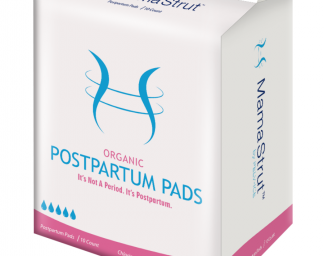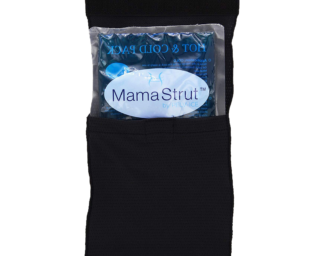
 On the one-year anniversary of my third and last labor, I look back on how I coped with the labor pain. This reflection brings up the question every first-time mama-to-be wants to know: how painful will labor be and what can I do to help myself cope with labor pain?
On the one-year anniversary of my third and last labor, I look back on how I coped with the labor pain. This reflection brings up the question every first-time mama-to-be wants to know: how painful will labor be and what can I do to help myself cope with labor pain?
Maybe it’s the result of Hollywood depicting wild birth scenes or maybe it’s the abundance of unsubstantiated information on the Internet, but many mamas-to-be are developing a deep anxiety about birth – sometimes even months before delivery. This fear won’t only ruin your pregnancy, but can actually make birth more painful and more likely to end in an intervention. So, instead of focusing on the fear of pain, let’s explore how you can cope with labor instead.
You’ve Got This, Mama
To be clear – birth is a big deal and painful, Pain is a four-letter word, but not a negative one. It’s a way to express a physical sensation to others. Describing how your body feels during labor will help your caregivers provide the right support. No one should be negatively judged because they find birth painful (birth shaming and pain management are related topics that should also be addressed in light of dialogs that rank birth success depending on the amount of intervention or type of management dispensed).
Simply put, a successful birth is a healthy one for mama and baby. Do not listen to anyone that judges your birth choices.
There Are Many Options For Coping With Labor
Because labor is difficult and painful, there are numerous natural and pharmacological ways to help manage it. The degree of labor pain varies from mama to mama – contractions can range from “sensations” or menstrual cramp-like discomfort, to an intensely excruciating experience that, in the moment. you can’t imagine surviving. But don’t worry, you can’t die from labor pain.
Labor Pain Is Not Constant
The good news is that unlike any other types of pain you have felt throughout the course of your life, there are actually pain-free breaks between contractions. These breaks allow you to rest, breathe, and prepare yourself for the next contraction, as well as communicate with your support team.
Labor Pain Intensity Has Stages
Another important fact to keep in mind is that intense contractions warm up your body, starting slow and far apart and increasing in intensity. This progression in intensity and frequency actually helps your body cope with them. Recognizing that you have managed through the last contraction will give you the confidence that you will be able to manage through the next despite the fact that it may be more intense.
It’s Not Pain, It’s Progress
Knowing what’s happening to your body during labor will help you see the pain as progress on your birthing journey, and not a sign of the body being in distress like other kinds of pain. The pain felt as the uterus contracts to help your baby exit is a positive thing – but because we have associated pain with something destructive happening to our body our entire lives, we are hardwired to interpret labor pain as a threat. Mentally recognizing that labor pain is different will help you view it as positive.
My personal birth mantra (which started off as a joke between me and my doctor) was “It’s not pain, it’s progress.” As I repeated this in my head throughout labor, it helped me focus on the task at-hand and even chuckle after a massive contraction that hurt like hell. Many mamas have report repetition and rhythm as coping mechanism to help keep them in the zone.
That being said, it is still pain and reducing that pain will increase your birth outcome and even your chances of postpartum depression. (citation)
Here are some things to consider when it comes to coping with labor pain:
Mama Musts
- Be educated, informed, and prepared about birth and your pain management options.
- Surround yourself with people (doctor/midwife/partner/doula) that support your wishes.
- The positioning of your body and mobility can reduce pain – walking, squatting, and not lying on your back can reduce pressure and pain.
- Create a calm labor and birthing environment (hospital/birth center/home birth), taking into consideration who is there, noise level, and familiarity for your personal comfort.
- Do your best to have your baby in the optimal position for birth. See spinningbabies.com.
- Keep hydrated but not overly hydrated – not getting enough fluid during labor can be detrimental; having too much IV fluid can lead to swelling, making birth more difficult.
Natural Methods
- Ice and heat therapy are tried and trusted ways to relieve pain, ease cramps, and relax muscle tension.
- Some mamas-to-be prefer massage, while others in the heat of labor might not want to be touched, so talk to your support team about listening to your cues prior to the big day.
- Water in the form of a tub or shower can help relax muscles, reduce gravity pressures, and ease tension.
- Movement and changing positions in labor can provide relief from pressure.
Pharmacological Support
- Nitrous Oxide provides anxiety and pain relief, and is self-administered, so you can decide how much is right for you. Studies have not shown any significant risks to the fetus or mother, but side effects can include dizziness, nausea, or vomiting.
- Talk to your doctor beforehand about which intramuscular opiates – pain relieving drugs – are available to you, how they are administered, and the pros and cons of each.
- An ambulatory (walking) epidural is a lower-dose epidural, which allows you to retain sensation in your legs so you can move around.
- An epidural analgesia delivers pain medication through a tube inserted into the epidural space in the vertebral canal.
- A spinal epidural delivers a local anesthetic in the lower back, just outside the spinal cord, to reduce sensations in pelvis or abdomen .
- A local analgesia is injects pain-relieving medication directly to specific area of the body.
No matter which path you anticipate, keep in mind that when you are in the midst of labor, you might end up using a different coping mechanism or a combination of methods. The best way to prepare is to be educated – and open-minded – about all the ways you can cope with labor and remember, you got this mama!




